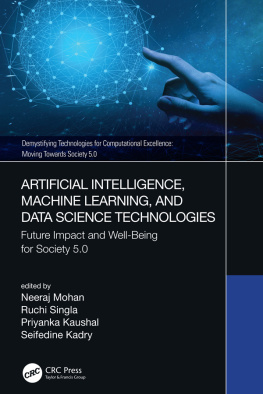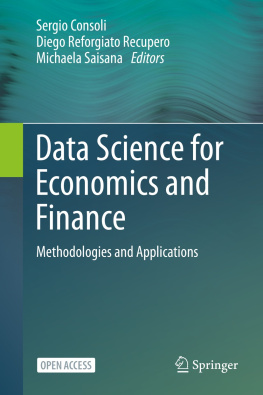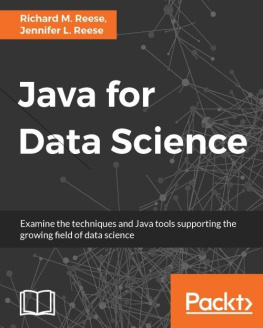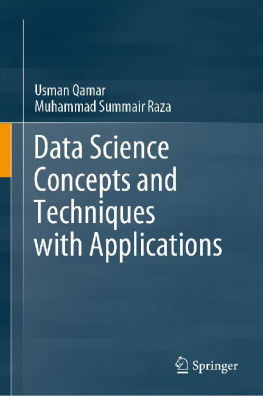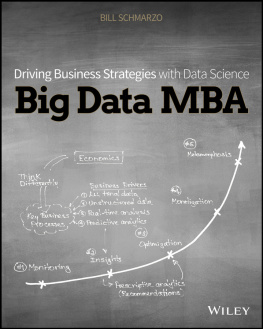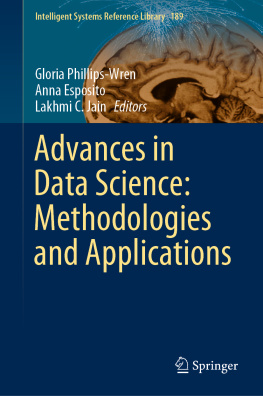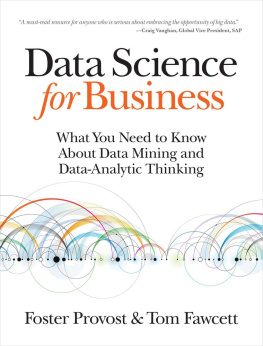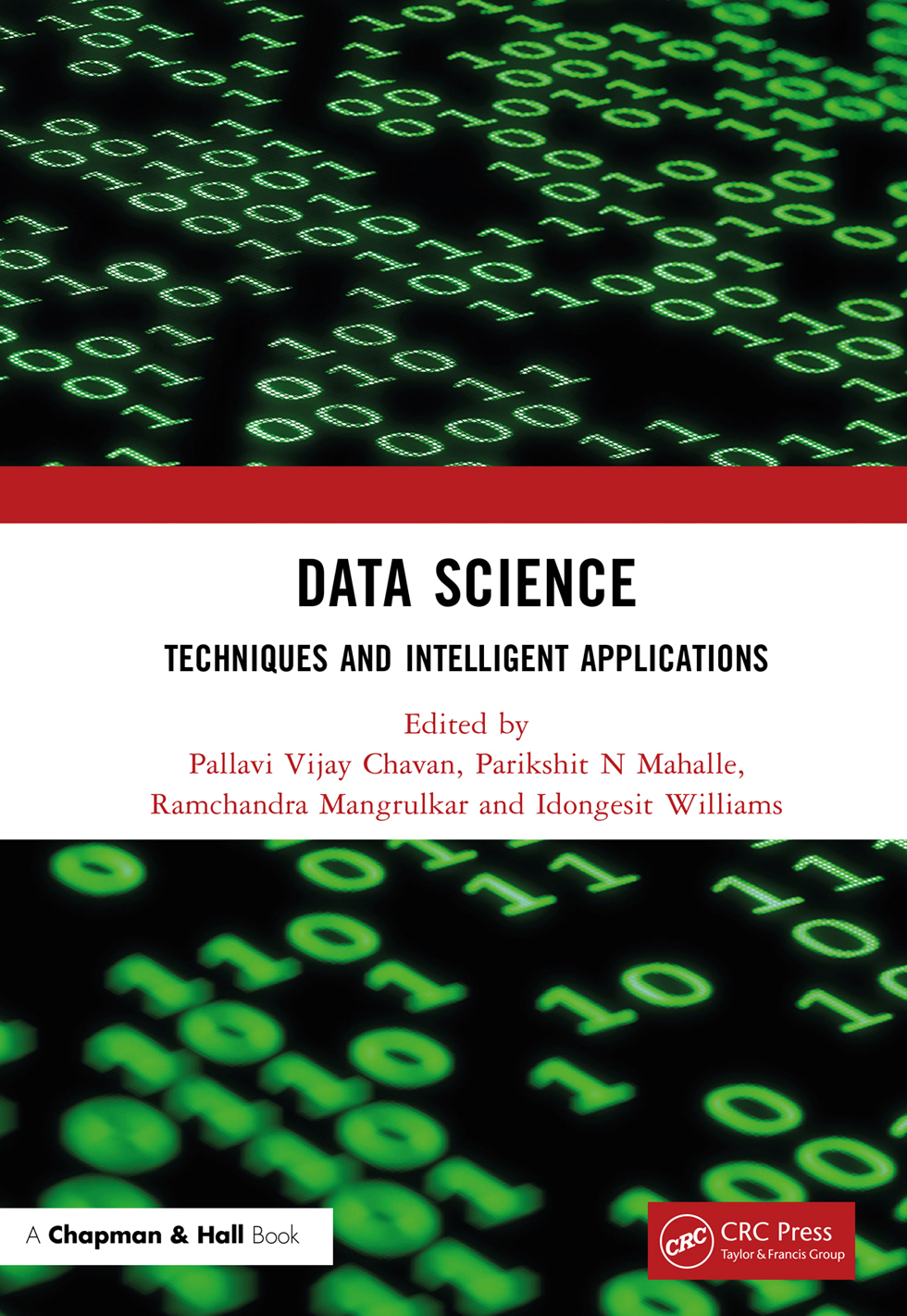
Data Science
This book covers the topic of data science in a comprehensive manner and synthesizes both fundamental and advanced topics of a research area that has now reached its maturity. The book starts with the basic concepts of data science. It highlights the types of data and their use and importance, followed by a discussion on a wide range of applications of data science and widely used techniques in data science.
Key Features
- Provides an internationally respected collection of scientific research methods, technologies and applications in the area of data science.
- Presents predictive outcomes by applying data science techniques to real-life applications.
- Provides readers with the tools, techniques and cases required to excel with modern artificial intelligence methods.
- Gives the reader a variety of intelligent applications that can be designed using data science and its allied fields.
The book is aimed primarily at advanced undergraduates and graduates studying machine learning and data science. Researchers and professionals will also find this book useful.
First edition published 2023
by CRC Press
6000 Broken Sound Parkway NW, Suite 300, Boca Raton, FL 33487-2742
and by CRC Press
4 Park Square, Milton Park, Abingdon, Oxon, OX14 4RN
CRC Press is an imprint of Taylor & Francis Group, LLC
2023 selection and editorial matter, [Pallavi Vijay Chavan, Parikshit N Mahalle, Ramchandra Sharad Mangrulkar and Idongesit Williams]; individual chapters, the contributors
Reasonable efforts have been made to publish reliable data and information, but the author and publisher cannot assume responsibility for the validity of all materials or the consequences of their use. The authors and publishers have attempted to trace the copyright holders of all material reproduced in this publication and apologize to copyright holders if permission to publish in this form has not been obtained. If any copyright material has not been acknowledged please write and let us know so we may rectify in any future reprint.
Except as permitted under U.S. Copyright Law, no part of this book may be reprinted, reproduced, transmitted, or utilized in any form by any electronic, mechanical, or other means, now known or hereafter invented, including photocopying, microfilming, and recording, or in any information storage or retrieval system, without written permission from the publishers.
For permission to photocopy or use material electronically from this work, access
Trademark notice: Product or corporate names may be trademarks or registered trademarks and are used only for identification and explanation without intent to infringe.
Library of Congress CataloginginPublication Data
Names: Chavan, Pallavi, editor. | Mahalle, Parikshit N, editor. | Mangrulkar, Ramchandra, editor. |
Williams, Idongesit, editor.
Title: Data science : techniques and intelligent applications / edited by
Pallavi Vijay Chavan, Parikshit N Mahalle, Ramchandra Mangrulkar, Idongesit Williams.
Description: First edition. | Boca Raton, FL : Chapman & Hall/CRC Press, 2023. |
Includes bibliographical references and index. |
Summary: The proposed book covers the topic of data science in a very comprehensive manner and synthesizes both fundamental and advanced topics of a research area that has now reached maturity. The book starts from the basic concepts of data science; it highlights the types of data, its use and its importance, followed by discussion on a wide range of applications of data science and widely used techniques in data science.
Key features: provides an internationally respected collection of scientific research methods, technologies and applications in the area of data science, presents predictive outcomes by applying data science techniques on real life applications, provides readers with the tools, techniques and cases required to excel with modern artificial intelligence methods, and gives the reader variety of intelligent applications that can be designed using data science and its allied fields. The book is aimed primarily at advanced undergraduates and graduates studying machine learning and data science. Researchers and professionals will also find this book useful Provided by publisher.
Identifiers: LCCN 2022002189 (print) | LCCN 2022002190 (ebook) | ISBN 9781032254494 (hbk) | ISBN 9781032254517 (pbk) | ISBN 9781003283249 (ebk)
Subjects: LCSH: Big data. | Electronic data processing. | Information technology. | Information science.
Classification: LCC QA76.9.B45 D394 2023 (print) | LCC QA76.9.B45 (ebook) | DDC 005.7dc23/eng/20220416
LC record available at https://lccn.loc.gov/2022002189
LC ebook record available at https://lccn.loc.gov/2022002190
ISBN: 978-1-032-25449-4 (hbk)
ISBN: 978-1-032-25451-7 (pbk)
ISBN: 978-1-003-28324-9 (ebk)
DOI: 10.1201/9781003283249
Typeset in Palatino
by codeMantra
Preface
We are in the data-driven age, and the data science field has gained attention of people not only from the technical field but also from all the areas of society. There has been tremendous growth in data every day, and we are equipping ourselves with the best set of tools and technologies to handle those data. Data science has become a core capability everywhere, more specifically in the industrial sector. Many e-commerce businesses are data driven. Every day, these e-commerce businesses collect a huge amount of data, analyze the data and decide on some policy to improve the business. The fourth industrial revolution we are observing all over the globe is based on data science and its allied fields. Machine learning, deep learning and artificial intelligence are the key elements in data science. Data science with its scientific methods gives conclusions and analysis, while machine learning and deep learning algorithms help to have predictive models. There are several algorithms available with machine learning such as supervised learning, reinforcement learning and unsupervised learning. Classification is the most popular category of machine learning algorithms. The researchers and practitioners use machine learning and deep learning algorithms as per their requirements and suitability of the algorithms to their problem statement. Deep learning techniques also play a crucial role in the design of intelligent applications. Deep learning algorithms are a family of artificial neural networks. These networks learn themselves and get trained for a given set of data. Validation testing in deep learning exhibits accuracy in learning. Artificial intelligence also plays a significant role in the design of intelligent applications with data science. Artificial intelligence helps in designing rule-based systems. Such rule-based systems include facts and rules of inferences. On the other side, there are the technologies such as soft computing, fuzzy logic and genetic algorithm. These technologies have a significant contribution to the development of intelligent applications. Today, intelligent applications are used almost in all the sectors such as healthcare, education, agriculture, finance, games and sports, and entertainment. Intelligent applications in healthcare include diabetic retinopathy, diabetes detection, expert systems for medical diagnosis and many more. In the agriculture field, the popular intelligent applications includes the prediction of rain, weather forecasting, crop prediction, and soil quality determination and prediction. In finance, applications like stock price prediction and gold rate prediction are most popular. This book aims to provide a platform for researchers to promote intelligent applications and their design for the betterment of the technology and the society in turn.
Next page

